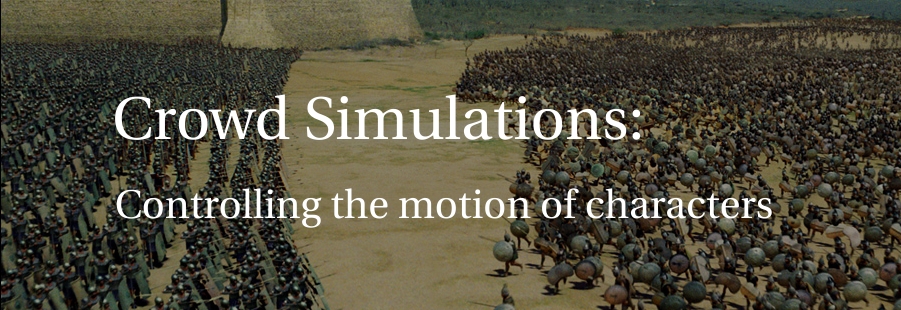
Conclusion
Each approach has its advantages and disadvantages, and it is clear that the perfect solution is not possible by just implementing one of these approaches when creating a crowd simulation.
A combination of these techniques would seem to provide the answer for future crowd systems. A combination of approaches, in theory would cancel out the individual disadvantages of each approach and provide a extremely realistic, efficient and reusable system.
Hardware limitations severely restrict the full-blown physics-based approach, but using it to create highly dynamic motion samples for the purpose of data interpolation via the motion library, would be realistically something that could be implemented in the near future. Interacting with uneven terrain and stepping over obstacles could be implemented by apply a per-frame inverse kinematic (IK) solver to slightly adjust the lower body to satisfy the positional constraints on each foot. Solving IK on the lower body not only has the effect of planting the foot firmly on the ground without changing the overall looks of the motion, but it is also light-weight enough to apply to smaller size crowds in order for the camera to get closer to the action than ever before.
References
Abe, Y. et al, 2004, Momentum-based Parameterization of Dynamic Character Motion.
Cousins, A., Motion Capture Centre, Bournemouth University.
Duy Le, D. et al, 2001, Integrating Age Attributes to Virtual Human Locomation.
Grochow, K., 2004, Style-Based Inverse Kinematics
Jung, M. et al, 2000, Motion Capture and Editing: Bridging Principles and Practices.
Kovar, L. & Gleicher, 2004, Automated Extraction and Parameterization of Motions in Large Data Sets.
Kovar, L. & Gleicher, 2003, Flexible Automatic Motion Blending with Registration Curves.
Lee, J. & Shin, S, date unknown, A Hierarchical Approach to Interactive Motion Editing for Human-like Figures.
Liu, C et al, 2004, Learning Physics-Based Motion Style with Nonlinear Inverse Optimization.
Sun, H. & Metaxas, D, 2001, Automating gait generation.
Witkin, A. & Popovic, 1995, Motion Warping
Xiao, Z., Research Student, NCCA, Bournemouth University.
